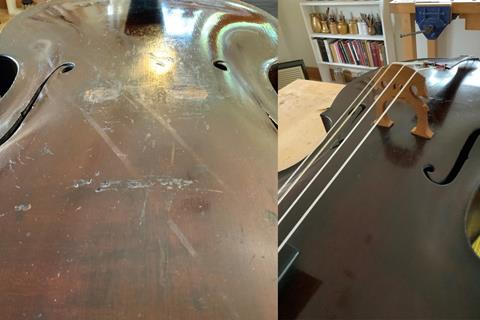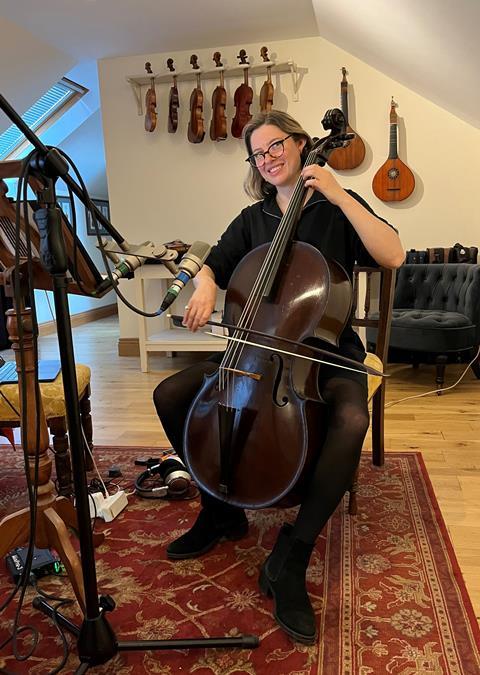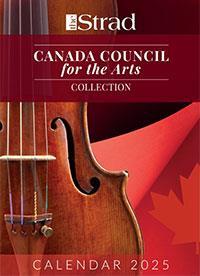The 1756 cello by Robert Duncan, which once belonged to a fierce opponent of the slave trade, will take to the stage in a performance at the University of Aberdeen on 22 November

Believed to be the oldest surviving Scottish cello, the 1756 cello by Aberdeen luthier Robert Duncan will be heard by audiences for the first time since the 18th century, thanks to recent restoration by luthier and restorer David Rattray.
The cello was donated to the University of Aberdeen’s Special Collections as part of a bequest by former student and later professor of philosophy James Beattie (1735–1803). Beattie was an amateur cellist and member of the Aberdeen Musical Society. He studied at the university’s Marischal College, becoming professor there in 1760 where he remained for the rest of his life.
Luthier Duncan was employed as a porter at Marischal College from 1753 until 1781, where he likely maintained the in-house instruments.
As a fierce opponent of the slave trade, Beattie gained recognition following his publication of An Essay on the Nature and Immutability of Truth in 1770, which attacked the work of the most famous philosopher of the day, David Hume. Beattie particularly criticised Hume for his description of enslaved African people. His next philosophical work, Elements of Moral Science (1790-3) included another, more forceful denunciation of slavery.
Following Beattie’s death in 1803, his papers, letters and his cello in its original case were donated to the university where they have been cared for by Special Collections ever since. Thanks to restoration by Rattray in 2024, the cello will be heard in public as part of the University of Aberdeen’s concert series on Friday 22 November with early music group Scots Baroque.
Rattray, who carried out the restoration, said: ’As a luthier, the workmanship seen in this instrument and its bespoke case is outstanding. Likely the oldest surviving Scottish cello, it remains in pure baroque condition, and demonstrates the craftsmanship of one of the best violin makers of the Aberdeen school.’

The cello will be played by Lucia Capellaro, who specialises in historical and contemporary performance, alongside recorder player László Rózsa, violinist Aaron McGregor and Alex McCartney on theorbo.
Dr Aaron McGregor, lecturer in music performance at the University of Aberdeen, said: ’It is incredibly exciting to be able to hear Beattie’s cello played in public probably for the first time since his lifetime, in the very appropriate setting of King’s College Chapel. The ensemble explores music Beattie would have known from his own social music making at home and through his involvement in the orchestra of the Aberdeen Musical Society - which funnily enough also celebrates their founding with a concert each year on St Cecilia’s Day, 22 November.’
The concert will feature Italian sonatas and chamber music with settings of Scottish music, illustrating the range of music that would have been enjoyed by Beattie and his contemporaries.
All images courtesy University of Aberdeen.
Read: Juilliard School dismisses violin faculty professor Li Lin
Read: Distinguished violinist loans 1714 ‘Massart’ Strad to his most promising former pupil
An exclusive range of instrument making posters, books, calendars and information products published by and directly for sale from The Strad.
The Strad’s exclusive instrument posters, most with actual-size photos depicting every nuance of the instrument. Our posters are used by luthiers across the world as models for their own instruments, thanks to the detailed outlines and measurements on the back.
The number one source for a range of books covering making and stringed instruments with commentaries from today’s top instrument experts.
The Canada Council of the Arts’ Musical Instrument Bank is 40 years old in 2025. This year’s calendar celebrates some its treasures, including four instruments by Antonio Stradivari and priceless works by Montagnana, Gagliano, Pressenda and David Tecchler.












































No comments yet